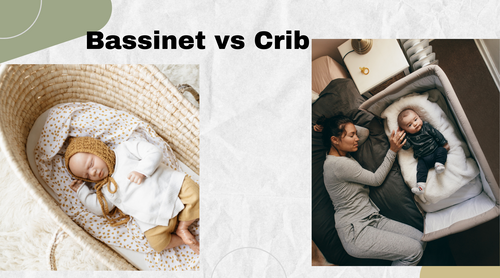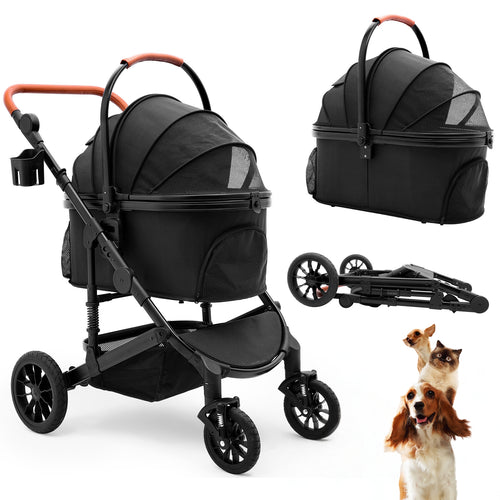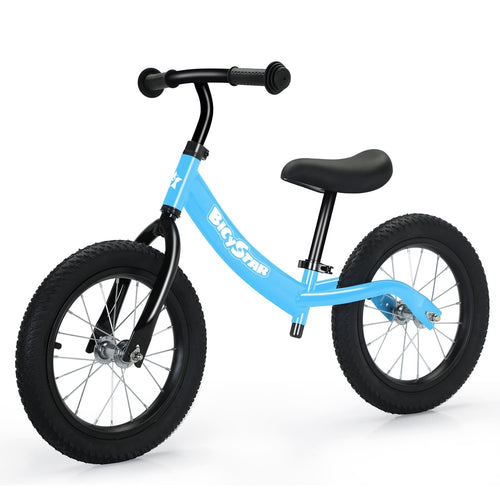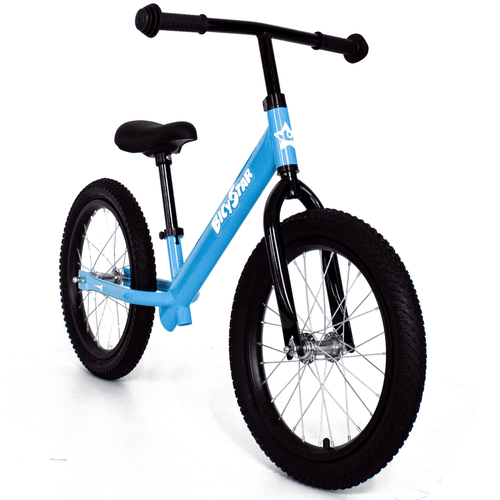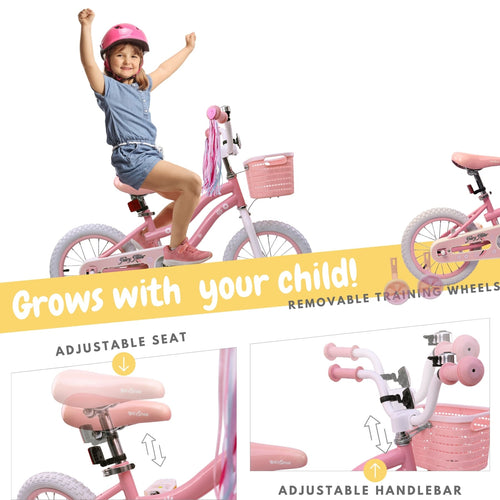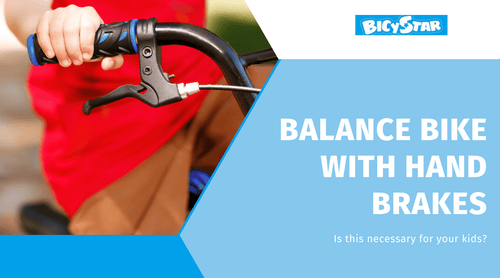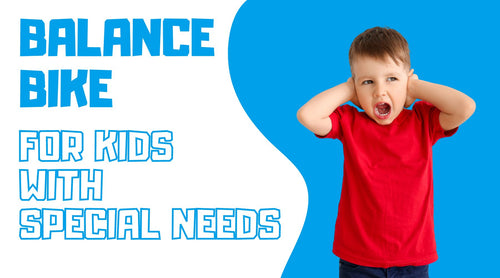Introduction
Selecting the ideal sleeping setup for your newborn is crucial, as it impacts not only their comfort and safety but also their development. With many options available, the decision between a bassinet and a crib is significant. Understanding the specific advantages and limitations of each can guide parents in making an informed choice suited to their lifestyle, space, and the baby’s growth needs.

What Are Bassinets and Cribs?
When it comes to spaces for baby to sleep, bassinets and cribs may be the primary options that come to mind. A bassinet is typically smaller and designed to keep your baby safe. It offers a cozy, compact sleeping environment and is portable, making it easier for parents to keep their baby close throughout the night and supports the growth of your baby. On the other hand, a traditional crib is a larger, more durable structure that can accommodate your child from newborn stages to toddler years. There are various types of cribs available, such as traditional cribs, convertible cribs that can transform into toddler beds, and mini cribs which are compact but stationary.
Pros and Cons of a Bassinet

Advantages of Using a Bassinet
Bassinet is a bed specifically. A bassinet is specially designed for infants, typically suitable for newborns to babies a few months old. Bassinets are favored for their convenience to baby sleep during the newborn stage. Bassinets are smaller and usually more portable than cribs. They are easy to position next to your bed, allowing for simpler middle-of-the-night feedings, soothing and keeping baby safe. The height of a bassinet often makes it easier to lay your baby down without having to bend over too much, which is particularly beneficial for mothers recovering from childbirth. They are specifically designed to provide a safe, comfortable sleeping space for very young babies.
Limitations of Bassinets
Despite their initial benefits, bassinets are only useful for a short period. Most bassinets have weight limits and suit your baby until the baby begins to roll over or pull up, which typically occurs around four to six months. At this stage, crib is safer , you will need to purchase a crib to make sure your baby safe, which represents an additional expense.
Pros and Cons of a Crib

Benefits of Choosing a Crib
Crib is a small bed. The major advantage of opting for baby cribs is its longevity. Designed to be a long-lasting investment, cribs can be used from the newborn stage right up to the point when your child is ready for a toddler bed. Furthermore, A crib offers more space than a bassinet. Cribs are governed by stringent safety standards, ensuring a secure sleeping environment for growing babies.
Downsides to Baby Cribs
The primary disadvantage of a crib is its size, which requires a dedicated space within your home. Unlike bassinets, cribs are not easily moved, which could make night-time care more challenging in the initial months.
After understanding the advantages and disadvantages of both bassinets and cribs, the next step for parents is to weigh these options against several key factors that pertain to their specific circumstances. Deciding between the two is not just about preference for appearance or immediate convenience, but about considering the broader impacts on lifestyle, home environment, and future needs.

Detailed Considerations for Choosing a Bassinet or Crib
When parents face the decision of choosing between a bassinet and a crib for their newborn, there are several key factors to consider that can influence their choice. Here's a detailed look at various angles that can provide a thorough perspective:
1. Duration of Use
Bassinets: Designed for newborns and small infants, bassinets are typically used for the first few months of a baby's life (often until the baby can roll over, sit up, or reaches the weight limit, which is usually around 4-6 months).

Cribs: Cribs can be used from newborn stages up to toddler years, making them a longer-term investment. Many cribs can convert into toddler beds, day beds, or even full-sized beds as the child grows.
2. Space Considerations
Bassinets: If you live in a smaller home or apartment, a bassinet might be the best sleeping option for your baby due to its compact size and portability. It's an ideal solution for keeping your baby close to choose a bassinet at night without sacrificing space.
Cribs: If you have more room, use a crib from the start could eliminate the need to transition to a different sleep space as newborn babies grows. This might be challenging for smaller homes or shared sleeping arrangements.
3. Safety and Comfort
Bassinets: Some parents feel that bassinets, being more enclosed, can offer a cozier environment for newborns, which might be comforting in the early stages.
Cribs: Cribs are generally more robust, stable, and manufactured to stringent safety standards, ensuring a safe sleep environment as the baby grows.
4. Portability and Convenience
Bassinets: Often lightweight and sometimes designed with wheels, bassinets can be easily moved around the house, allowing the parent to keep the baby close throughout the day and night.
Cribs: Generally stationary due to their size and build, moving a crib from one room to another can be cumbersome, making them less convenient in terms of portability.
Think about how often you might change rooms or travel. Parents who travel frequently might find a bassinet easier to transport. In contrast, if you mostly stay at home and have the space, a crib could be the better long-term choice.
5. Cost
Bassinets: Typically less expensive than cribs due to their smaller size and simpler design.
Cribs: Can be more costly, especially those that convert into beds for toddlers and older children. However, considering their longer usage life, the cost per year can be reasonable.
6. Aesthetic Preferences
Bassinets: Available in various designs that can range from simple to modern or stylish, fitting well in a master bedroom or alongside other furniture without taking much space.
Cribs: Offers more variety in terms of design, material, and features, with some parents preferring a furniture piece that can be a focal point in the nursery.
7. Sleep Practices
Some parents prefer to follow specific infant sleep practices, such as room-sharing without bed-sharing, where a smaller, separate sleep surface like a bassinet is ideal during the initial months. Cribs, although suitable for room-sharing, often require a dedicated space.
Considering these perspectives helps parents weigh their immediate needs against their long-term plans, balancing convenience, safety, lifestyle preferences, and budget to make the best choice for their baby and family situation.
8. Safety Standards and What You Need to Know
Regardless of the choice between a bassinet or a crib, ensuring the product meets current safety standards is crucial. Look for certifications that guarantee the product adheres to modern safe sleep guidelines. These standards help ensure that the product provides a safe places for your baby, using appropriate materials and constructions such as firm mattresses and secure, breathable sides.
Transitioning from A Bassinet to A Crib
When to Make the Switch
Put your baby to a crib when they begin showing signs of increased activity such as rolling or pulling up. This typically happens by the age of six months. It's time to buy a crib, rather than keeping the bassinet in use, because bassinet is smaller to place your baby.
Making the Transition Smooth
Help your baby adapt to sleep in a crib by introducing the crib during nap times. This gradual introduction helps your baby get used to the new sleep environment in smaller increments.
Conclusion About Bassinet vs Crib
Choosing the right sleeping arrangement—be it a bassinet or crib—depends on multiple factors. Each option serves a specific purpose; bassinets offer convenience and closeness during the early months, while cribs provide a long-term, safe sleeping environment as your child grows.
Key Takeaways--Bassinet vs Crib
- Evaluate the duration of use, space, and lifestyle needs when deciding.
- Safety should always be the priority, ensure any choice meets the latest safety standards.
- Consider both immediate and long-term needs to make a cost-effective decision.
- Transition thoughtfully from a bassinet to a crib as your baby grows and becomes more mobile.

Ultimately, making the right choice will ensure your baby’s safety and comfort while accommodating family lifestyle and space considerations.
FAQ: Navigating the Choice Between a Bassinet and Crib for Your Baby
Q1: What is the fundamental difference between a bassinet and a crib?
A1: A bassinet is a bed specifically designed for newborns and is generally smaller and more portable than a crib, making it easier to place next to your bed for easy access during the night. A crib, or baby bed, is larger and designed to grow with your baby, often used from newborn stages up to toddler years.
Q2: What are the benefits of a round crib compared to a rectangular crib?
A2: Round cribs can be aesthetically pleasing and may offer better visibility of your baby from more angles. However, they often require special, harder-to-find mattresses and bedding. It features a standard crib mattress that is easy to replace, offers more options for accessories, and is generally more practical due to its shape when crib is rectangular.If you want a crib, you need to weigh the pros and cons of both options.

